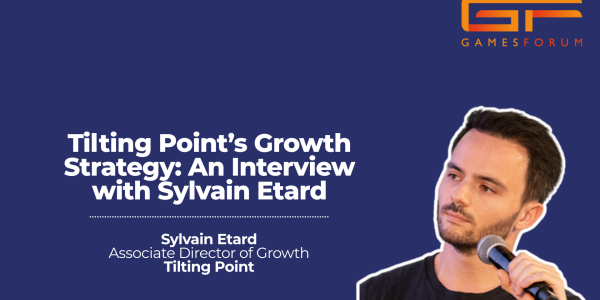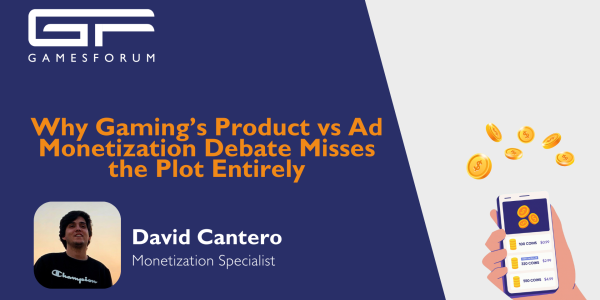Gamesforum Meets: Dan Blechner, Co-founder & CPO, QUAGO

Hi Dan, thanks for joining us! Can you introduce yourself?
My name is Dan Blechner, and I’m the co-founder and CPO at Quago. I have a passion for leveraging technology to create positive impacts and a deep love for mountain biking and hiking. As a kid, I was really into retro games, and one of my favorites was the legendary Castle Wolfenstein.
Talk to us a bit more about QUAGO, what does the company do?
Quago introduces a new dimension in understanding human behavior online. One of our main solutions is detecting end-user and commercial abuse of post-install events, ensuring that engaged users are accurately identified and rewarded without the interference of cheaters. Our technology fills the data gaps in the post-install matrix, making it simple, efficient, and transparent. Importantly, we don’t require any additional data collection permissions from end-users or app stores, ensuring a seamless experience that respects user privacy while enhancing the gaming experience.
How did you come to work at QUAGO?
I’ve always been curious about understanding human behavior better, especially in the digital realm. This curiosity, combined with a strong desire to help more people navigate and improve their online interactions, led to the establishment of Quago. We saw a significant need for a solution that could accurately detect and address inauthentic activities, ensuring a better experience for both users and developers.
What are the greatest challenges facing mobile games growth teams?
One of the biggest challenges is navigating the ever-evolving privacy changes. These regulations are crucial but can make it difficult to gather and use data effectively. Additionally, there's the increasing accessibility of in-app circumvention technology for end-users, which complicates ensuring fair play and accurate data. Another significant issue is the rising abuse of CPA models by commercial partners who don't provide sufficient data to verify post-install traffic. This lack of visibility into user behavior makes it nearly impossible to conduct user acquisition as it was traditionally done, thereby posing a significant challenge to effective monetization.
With rising CPIs UA teams are increasingly focusing on retention. How can UA and product teams work to fight churn?
The more we understand and know earlier who the good players are and what channels they’re coming from, the better we can create specific strategies to maintain them in the game.
To fight churn effectively, it's crucial for UA and product teams to collaborate closely. The key lies in understanding and identifying the good players early on, and knowing which channels they come from. By gaining these insights, we can develop specific strategies tailored to retain these valuable players. This might involve personalized in-game experiences, targeted rewards, or customized communication that resonates with their preferences and behaviors. The more we know about our players and their journey, the better equipped we are to keep them engaged and invested in the game.
What can be done to predict churn?
Typically, teams analyze game events, session durations, and purchase behaviors to forecast churn. However, the challenge lies in the fact that players may exhibit positive engagement on the first day yet still churn later. As a result, reliable predictions are often only available after 7-28 days, rendering them insufficient for early intervention. To address this, new methods that allow UA managers to act sooner are essential. At Quago, we're developing an advanced churn prediction model, currently available in beta, that leverages our innovative sensor-data technology to predict churn in games within the first 24-48 hours with impressive accuracy. With these early predictions, UA managers can drastically reduce the time needed to test each new campaign and ad content, allowing for more experiments within a given time frame and budget.
There has been a lot of conversation surrounding fraudulent clicks in recent months. How can advertisers identify and fight such fraudulent users?
This is an excellent question. Let’s break it down into three distinct types of fraud: Ad Fraud (including Click Fraud), End-User Fraud, and In-App Fraud.
- Click Fraud: Click fraud involves sub-publishers manipulating engagement metrics to cash in on advertisers' organic traffic. End-users are typically not involved in this type of fraud. To combat click fraud, advertisers should:
- Set reasonable attribution windows to minimize the conversion of fraudulent engagements.
- Test integrations thoroughly to ensure they are robust against manipulation.
- Monitor for suspicious engagement patterns and avoid incentivizing engagements that could lead to in-app circumvention.
- In-App CPA Fraud: In-app CPA fraud is more sophisticated and often goes undetected. This type of fraud involves automated bots or device farms completing in-app actions to fraudulently generate credit for new users and payable events. To fight this, advertisers should:
- Use advanced anomaly detection systems on the server side to identify unusual activity patterns.
- Implement in-app detection mechanisms to catch fraudulent behavior in real time.
- Regularly update their detection algorithms to adapt to new fraud techniques.
- End-User Fraud: End-user fraud occurs when legitimate users exploit in-app features, leading to chargebacks or other financial losses. Advertisers can address this by:
- Implementing robust user verification processes.
- Monitoring for unusual behavior patterns that may indicate abuse.
- Designing features that are less susceptible to exploitation without discouraging genuine use.
By understanding and addressing these different types of fraud, advertisers can better protect their revenue streams and maintain the integrity of their user base.
Let’s talk about cheat identification, so a two part question:
Part one, how is cheating impacting mobile games monetization margins?
Cheating impacts several factors that influence monetization margins:
- It harms the user experience, increasing churn and causing brand risk due to a damaged reputation.
- It skews analytics, as cheating mixed with authentic behavior can significantly alter game metrics like ARPU, retention, and feature engagement, especially for new users.
- It reduces IAP revenue, as commercial cheating that provides in-app resources often offers players cheaper alternatives to some of the IAPs, thereby reducing ARPU.
Part two, what can be done to stop it?
Stopping cheating is no easy task. For end-user cheating, the goal should be to retain these players while convincing them to stop their wrongdoing. This can be achieved through measures such as sending warnings, disabling social features, and ghost banning. For stopping commercial cheating, the goal should be to change the ROI for the fraudsters so it will stop being economically beneficial for them to commit fraud.
Great to have the team joining us at Gamesforum Hamburg! What can our audience expect to hear from you?
People can expect to have an open discussion with us about the trends we’re seeing in the industry and how we've built our solutions to address the needs we've identified. For those interested in learning more, we can dive deeper into how our technology identifies and mitigates fraud, enhances user acquisition, and improves retention, providing the comprehensive solution they’ve been searching for.
Final question, what are you most excited for about Gamesforum Hamburg?
I'm most excited about meeting with top UA and monetization professionals and learning about their challenges and the latest trends in the field. It’s a fantastic opportunity to exchange insights and ideas with industry leaders.











